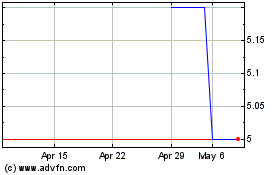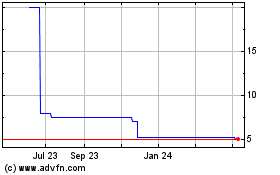UNITED STATES
SECURITIES AND EXCHANGE COMMISSION
Washington, D.C. 20549
FORM 8-K
CURRENT REPORT
Pursuant to Section 13 OR 15(d) of
The Securities Exchange Act of 1934
Date of Report (Date of earliest event reported) December 16, 2014
CAPSTONE THERAPEUTICS CORP.
(Exact name of registrant as specified in its charter)
| Delaware |
|
000-21214 |
|
86-0585310 |
(State or other jurisdiction
of incorporation) |
|
(Commission File Number) |
|
(IRS Employer
Identification No.) |
| |
1275 West Washington Street, Suite 104, Tempe, Arizona |
|
85281 |
|
| |
(Address of principal executive offices) |
|
(Zip Code) |
|
(602) 286-5520
Registrant's telephone number, including area code
________________________________________________________________________________
(Former name or former address, if changed since last report)
Check the appropriate box below if the Form 8-K filing is intended to simultaneously satisfy the filing obligation of the registrant under any of the following provisions (see General Instruction A.2. below):
|
| |
[ ] |
Written communications pursuant to Rule 425 under the Securities Act (17 CFR 230.425) |
| |
[ ] |
Soliciting material pursuant to Rule 14a-12 under the Exchange Act (17 CFR 240.14a-12) |
| |
[ ] |
Pre-commencement communications pursuant to Rule 14d-2(b) under the Exchange Act (17 CFR 240.14d-2(b)) |
| |
[ ] |
Pre-commencement communications pursuant to Rule 13e-4(c) under the Exchange Act (17 CFR 240.13e-4(c)) |
Section 7 - Regulation FD
Item 7.01. Regulation FD Disclosure.
The information in this Current Report, including the accompanying exhibit, is being furnished and shall not be deemed "filed" for the purposes of Section 18 of the Securities Exchange Act of 1934, as amended (the "Exchange Act"), or otherwise subject to the liabilities of that Section. The information in this Current Report shall not be incorporated by reference into any registration statement or other document filed pursuant to the Securities Act of 1933, as amended, or the Exchange Act, regardless of any general incorporation language contained in such filing.
On December 16, 2014, Capstone Therapeutics Corp. (the "Company") and its joint venture affiliate, LipimetiX Development, LLC, issued a press release announcing the completion of and results for its investigational AEM-28 (Apo E mimetic peptide) Phase 1b/2a human clinical trial in cholesterol and lipid reduction. The top-line data from the Phase 1a (reported on September 2, 2014) and Phase 1b/2a blended protocol has been analyzed. The Medical Safety Committee, reviewing all safety-related aspects of the clinical trial, observed a generally acceptable safety profile. As a first-in-man study, the primary endpoint was safety; yet, efficacy measurements analyzing pharmacodynamics yielded statistical significance in the pooled dataset favoring AEM-28 versus placebo in multiple lipid biomarker endpoints A copy of the press release is attached hereto as Exhibit 99.1 and is incorporated by reference.
Section 9 - Financial Statements and Exhibits
Item 9.01. Financial Statements and Exhibits.
|
(d)
|
Exhibits
|
|
Exhibit No.
|
Description
|
|
99.1
|
Press Release dated December 16, 2014
|
SIGNATURE
Pursuant to the requirements of the Securities Exchange Act of 1934, as amended, the Registrant has duly caused this report to be signed on its behalf by the undersigned hereunto duly authorized.
| |
|
CAPSTONE THERAPEUTICS CORP.
|
|
Date: December 16, 2014
|
|
/s/ JOHN M. HOLLIMAN, III
John M. Holliman, III
Executive Chairman |
EXHIBIT 99.1
Capstone Therapeutics Announces Phase 1b/2a Study Results for AEM-28 Showing Safety and Biomarker Efficacy Signals
TEMPE, Ariz., Dec. 16, 2014 (GLOBE NEWSWIRE) -- Capstone Therapeutics (OTCQB:CAPS) ("the Company") and its joint venture affiliate, LipimetiX Development, LLC ("JV"), announced today the completion of and results for its investigational AEM-28 (Apo E mimetic peptide) Phase 1b/2a human clinical trial in cholesterol and lipid reduction. The top-line data from the Phase 1a (reported on September 2, 2014) and Phase 1b/2a blended protocol has been analyzed. The Medical Safety Committee, reviewing all safety-related aspects of the clinical trial, observed a generally acceptable safety profile. As a first-in-man study, the primary endpoint was safety; yet, efficacy measurements analyzing pharmacodynamics yielded statistical significance in the pooled dataset favoring AEM-28 versus placebo in multiple lipid biomarker endpoints, which included:
-
p < 0.05 favoring AEM-28 vs. placebo within the first 12 hours post infusion at the highest dose tested of 3.54mg/kg in VLDL, equating to a maximum 76% drop in VLDL vs. baseline and a 56% net maximum reduction of VLDL vs. placebo;
-
p < 0.05 favoring AEM-28 vs. placebo within the first 12 hours post infusion at the 2 mg/kg dose in VLDL, equating to a maximum 70% drop in VLDL vs. baseline and a 41% net maximum reduction of VLDL vs. placebo;
-
p < 0.025 favoring AEM-28 vs. placebo within the first 12 hours post infusion at the highest dose tested of 3.54 mg/kg in triglycerides, equating to a maximum 74% drop in triglycerides vs. baseline and a 55% average net maximum reduction of triglycerides vs. placebo;
-
p < 0.025 favoring AEM-28 vs. placebo within the first 12 hours post infusion at the 2 mg/kg dose in triglycerides, equating to a 71% drop in triglycerides vs. baseline and a 45% net maximum reduction of triglycerides vs. placebo.
Dennis Goldberg, Ph.D., President of LipimetiX, states "We believe we are developing an important new class of cardiovascular drug and are pleased with these initial human results. The Phase 1b/2a cohorts featuring multiple ascending doses allowed us to establish four attributes of AEM-28: 1) no observations of immunogenicity or antibody response; 2) validation of the rapid and robust efficacy signal previously seen in the Phase 1a; 3) durable effect in lipid reduction; and 4) a clear dose dependent response curve. We did see infusion site reactions and venous irritation at the highest dose levels, but believe that will be addressed in future trials with a new proprietary formulation. We believe that the rapid and durable reductions in VLDL and triglycerides are unique to this therapeutic approach and could offer acute relief and a cardio-protective effect in at-risk patients."
The JV has a development plan, subject to continued favorable study results and funding availability, to pursue regulatory approval of AEM-28 and/or analogs as treatment for Homozygous Familial Hypercholesterolemia (granted Orphan Drug Designation by FDA in 2012), Acute Hypertriglyceridemic Pancreatitis and other Orphan indications in hyperlipidemia. The JV may possibly explore additional indications for its family of Apo E mimetic peptides including Acute Coronary Syndrome, Peripheral Artery Disease and mixed dyslipidemia Type 2 Diabetes.
The Protocol
Part A: The clinical study, performed at a hospital-affiliated clinical research site in Perth, Australia, was a Phase 1a randomized, placebo-controlled, double-blinded study testing six escalating single doses of AEM-28. There were six normal volunteer subjects (including two placebo and four active) in each of the dosing cohorts for a total of 36 subjects. The subjects were fasted overnight and were given an industry standard pre-medication regimen prior to IV administration of study drug. Follow up occurred over a fourteen day time frame. The primary objectives were to evaluate safety and tolerability and to determine preliminary pharmacokinetic and pharmacodynamic effects of AEM-28.
Part B: The Phase 1a study sequenced into a Phase 1b/2a multiple ascending dose study testing the three highest doses from Phase 1a. The Phase 1b/2a study tested five subjects (including one placebo and four active) in each of the dosing cohorts for a total of 15 subjects. Administration of placebo and study drug occurred at three intervals two weeks apart, with the exception of the highest dose level cohort which received a single administration. The subject population, initially targeted for refractory hypercholesterolemic subjects was expanded to include normal healthy volunteers with elevated fasting triglycerides and high Body Mass Index in order to expand on the pharmacodynamic effects seen in Phase 1a. All clinical aspects and study objectives are the same as the Phase 1a study, thereby allowing pooling of data for "a priori" analysis.
AEM-28/Analogs
Apolipoprotein E is a 299 amino acid protein that plays an important role in lipoprotein metabolism. AEM-28 is a 28 amino acid mimetic of Apo E that contains a domain that anchors into a lipoprotein surface while also providing the Apo E receptor binding domain, which allows clearance through the heparan sulfate proteoglycan (HSPG) receptors (Syndecan-1) in the liver. AEM-28, as an Apo E mimetic, has the potential to enhance the ability of atherogenic lipoproteins to be cleared from the plasma, completing the reverse cholesterol transport pathway, and thereby reducing cardiovascular risk. Since AEM-28 utilizes an alternative receptor for clearance by the liver, it may provide a therapeutic alternative for patients that lack a functional LDL receptor pathway (Homozygous Familial Hypercholesterolemia, HoFH) and enhance clearance of chylomicron and VLDL remnants by the Apo E pathway. In addition, the artery wall protective effects seen in multiple animal models may be highly beneficial to these patients and to others with atherosclerosis. The JV has an Exclusive License Agreement with the University of Alabama Birmingham Research Foundation for AEM-28 and certain of its analogs.
About Capstone Therapeutics
Capstone Therapeutics is a biotechnology company committed to developing novel therapeutic peptides aimed at helping patients with under-served medical conditions. The Company is focused on development and commercialization of Apo E Mimetic Peptide Molecule AEM-28 and its analogs (through the LipimetiX Development, LLC, joint venture).
Capstone's corporate headquarters are in Tempe, Arizona. For more information, please visit the Company's website: www.capstonethx.com.
Statements in this press release or otherwise attributable to Capstone regarding our business that are not historical facts are made pursuant to the safe harbor provisions of the Private Securities Litigation Reform Act of 1995. These forward-looking statements involve risks and uncertainties that could cause actual results to differ materially from predicted results. These risks include the factors discussed in our Form 10-K for the fiscal year ended December 31, 2013, and other documents we file with the U.S. Securities and Exchange Commission.
Editor's Note: This press release is also available under the Investors section of the Company's website at www.capstonethx.com.
CONTACT: FOR FURTHER INFORMATION:
Investor Relations
(602) 286-5250
investorinquiries@capstonethx.com
Capstone Therapeutics (QB) (USOTC:CAPS)
Historical Stock Chart
From Jun 2024 to Jul 2024

Capstone Therapeutics (QB) (USOTC:CAPS)
Historical Stock Chart
From Jul 2023 to Jul 2024
